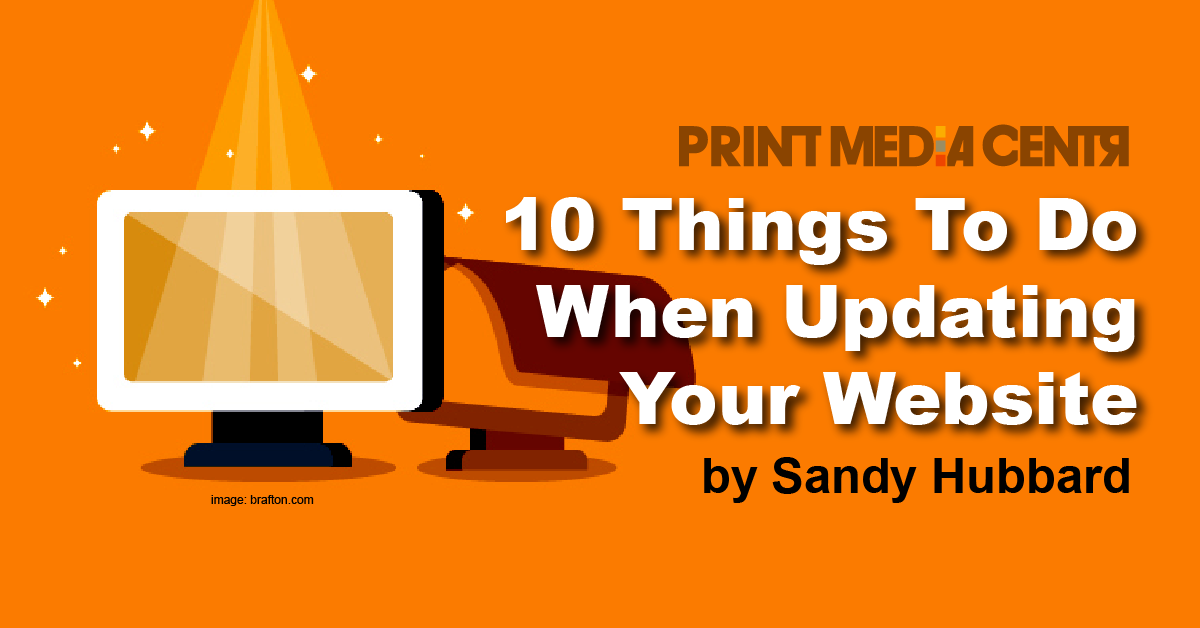
Whether you bring in a pro to help you update your website — or do it yourself — there are 10 things to do before you hit the publish button.
But first! I’d like to talk about one of my early clients.
Mike Hasson was the founder of the Hasson Company, a luxury real estate brokerage in Portland, Oregon. When I first met Mike, I handed him a list of things we should do when updating his site.
Many items on the list would not be glaringly noticeable to the average web visitor. As an overall experience, though, these things would form an impression of the company.
I told him it was essential that his website — in every way — demonstrate that the Hasson Company was ultra-professional.
It turned out Mike’s website was already superbly written and designed. My job was to write about his high-end relocation services. We were going to focus on wealthy, educated business people who sought a luxurious lifestyle.
As Mike and I talked, I knew he was my kind of client — smart, quick, and able to execute on a vision.
His vision was this:
Website visitors are not “targets” or “sales prospects.” They are guests who deserve hospitality, respect and attention. From his word choices to images and colors, Mike’s website reflected this visionary concept… and I admired him for it.
Mike built the Hasson Company to be a top real estate company. He was an inspiration and role model for me, as all my clients are. He treated customers like guests and his employees (and independent contractors) like family.
Working for the best makes you better.
Thanks for that stroll down memory lane. I hope you were inspired to look at your website in a new way.
And now — here is my list for you…
As you update your website, these 10 things will radiate professionalism, respect for the guest, and a welcoming atmosphere:
1. Check readability. Run Yoast to get suggestions on how to improve SEO. Then use the Hemingway Editor app to improve the readability for real people.
2. Give readers some space. Break wide and long text into narrow, short sections.
3. Run spell check. Mistakes creep in when we refine and re-do, so use spell check each time you make changes (even the simplest ones).
4. Double-check every link. Take time to actually click through anytime someone works on a page or updates it.
5. Ask for the order. Include a link or button to your email address, booking calendar, or sales page.
6. Place yourself in the reader’s shoes. Think about how you navigate websites. Which writing style (tone) do you prefer? Which stats, testimonials, and examples catch your eye? Which graphics, charts, or blurbs help you make better decisions?
7. Present the flavor of the real you in your writing. Your website should set the stage for what it will be like to work with you. Show some personality!
8. Sprinkle in lots of photos (more than you think). Choose original, high-quality photos (current ones are best).
9. Reflect the diversity of the audience you serve. Use inclusive language and images. Mix in voice options for the sight-impaired. Watch for stereotypes or outdated phrases. If your audience is not diverse, why not?
10. Never talk down to the reader. You can educate and inform while using simple, straightforward language.
Remember, not everything on your website has to be razzle-dazzle.
A well-written, well-designed site should:
- Answer the reader’s main questions.
- Let them get comfortable with you.
- Help them decide if you are a good fit.
Mike always said, “Presenting the right information to the reader is a gesture of courtesy and appreciation.”
He was grateful for every guest who spent time on his website. He always remembered to say thank you.
It’s been 25 years since I helped Mike Hasson with his very first website. He was a web technology pioneer and had a fully interactive online inventory of homes in the early days of the internet. Mike understood “user experience” before the term existed. He knew how to make his website a useful, welcoming place.
I hope you make time (soon) to review your website with these 10 things in mind.
How you present yourself online speaks volumes about your company.
 Sandy Hubbard is an expert Marketing Strategist specializing in the Printing Industry. She consults with Print CEOs and owners of print, media, and platform businesses of all sizes — helping marketing teams build visibility and increase sales.
Sandy Hubbard is an expert Marketing Strategist specializing in the Printing Industry. She consults with Print CEOs and owners of print, media, and platform businesses of all sizes — helping marketing teams build visibility and increase sales.
Sandy is also co-host of #PrintChat, a weekly discussion on LinkedIn. Join the group here.
Read more from Sandy here.












